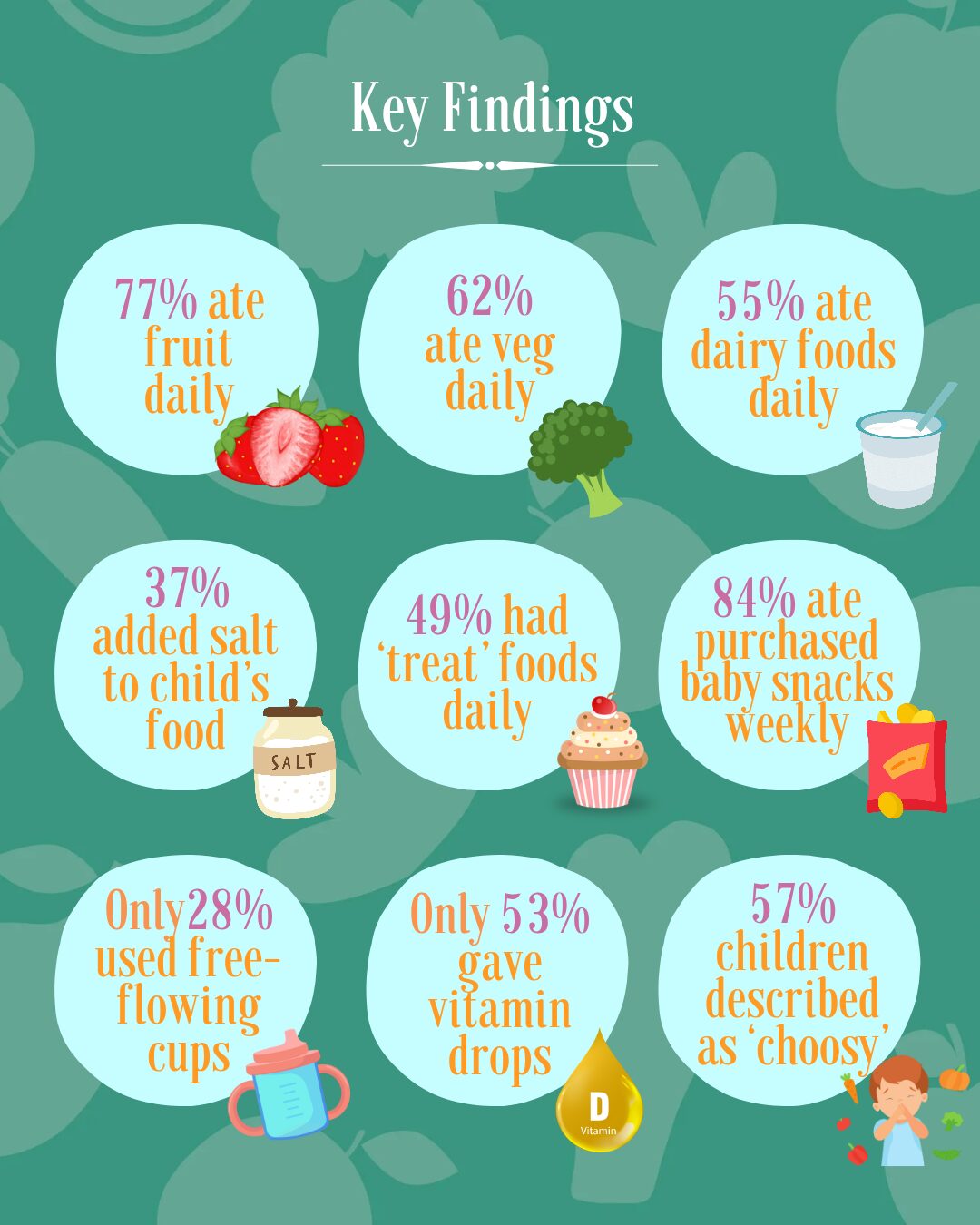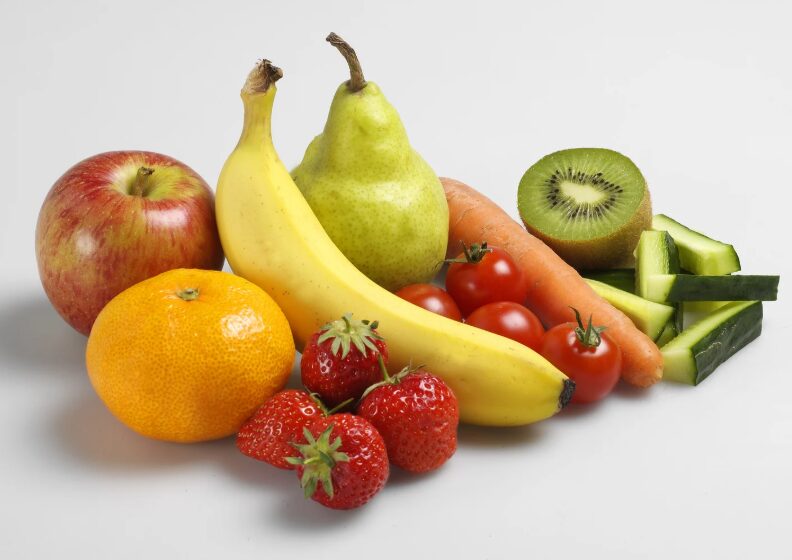In August 2025, the Office for Health Improvement and Disparities (OHID) unveiled a pivotal new report that sheds light on the eating and drinking habits of children aged 16 to 18 months across England. Drawing on data from over 2,500 primary caregivers, this comprehensive survey offers a rare and timely glimpse into the dietary patterns shaping toddler health during a critical window of development and a time when Child Nutrition is really hitting the headlines!
As I often say, the early years are such a crucial time for little ones to establish their eating habits. What we offer at this stage really can shape their likes, dislikes and relationship with food for the long term. Between 16 and 18 months of age, toddlers are growing rapidly, their brains are developing quickly, and they’re learning so much about the world around them, including food. Research also supports that good nutrition in early childhood is linked to better long-term health (SACN, 2011).
In this blog, I’m breaking down some of the key findings from this new report that I feel are most relevant for parents and caregivers – focusing on the positives, as well as the areas where we might want to pay a little more attention.
Key Findings from the Report
The infographic below highlights some of the key findings. Keep reading below, as I delve into these findings and why they matter.

Fruit and Vegetables, Starchy Foods and Dairy
UK guidance recommends that from 12 months, toddlers need a variety of foods, including fruit and vegetables, starchy foods, dairy, protein and iron-rich foods. For more information on the fundamental components of what a ‘healthy, balanced diet’ is for toddlers, take a look at my blog on Getting the Balance Right for Toddlers.
The good news from the new report is that most children are eating fruit and vegetables every day. It was found that 77% of children ate fruit daily and 62% ate vegetables daily. Children from families with higher household incomes were more likely to have fruit and vegetables at least once a day compared with those from lower-income households. The good thing to remember is that all types of fruit and vegetables count. Fresh, frozen, tinned and dried all work well, and even offering a small amount each day can make a real difference. See my blog on this topic for more tips on getting little ones to eat vegetables (and fruits).

The report showed that starchy foods (carbohydrates) and dairy foods are also regularly part of toddlers’ diets, which is encouraging. Almost all children ate rice or pasta at least once a week (97%), potatoes or potato products (96%) and bread (96%). Cheese, yoghurt and fromage frais were very common too, with 95% eating these foods weekly and 55% eating them daily.
These positive findings are summarised in the infographic below:

The OHID report also found that most toddlers are regularly eating protein-rich foods (which are important for growth and development), including meat, fish, eggs, beans, and pulses.
Biscuits, Sweets, Chocolates and Cakes
While there’s lots of positive news, the report also highlighted some less healthy eating patterns. Almost HALF (49%) of children had a ‘treat’ food every day, such as chocolate, crisps or ice cream and around 38% of children ate biscuits, sweets, chocolate or cakes two to four times a week. Some children had even more, with 17% having two daily treats, while only a third (33%) didn’t have a daily treat.
It’s common for little ones to be drawn to sweet or sugary foods, but it’s best to keep these to a minimum. Limiting sugar helps protect toddlers’ teeth and makes sure they have room for other foods that provide the nutrients they need. For more advice, take a look at my blog on How to Manage Sweets, Chocolates and Cake and Sugar for Babies and Children: What’s the Deal?
Salt
Salt is another area to watch for young children. To find out about why it’s important for children to limit salt intakes, check out my blog on Salt and young children. The report found that 37% of families often (or sometimes) added salt to their child’s food, even though UK guidance recommends avoiding salt to foods for babies and young children. Limiting salt helps protect developing taste preferences and reduces the risk of health problems (such as high blood pressure) in later life (NHS, 2022).

Snacks
Purchased finger foods or snacks are also common, with 84% of children having foods such as puffs, sticks, or biscuits at least weekly, and 21% enjoying these daily. Only 7% of children were never given purchased finger foods or snacks.
Recent UK guidance has asked manufacturers to reduce sugar and salt in commercial baby foods (such as those listed above like puffs, sticks and biscuits) and improve labelling, because many products currently contain levels of sugar and salt that are higher than recommended for young children.
The NHS recommends that ‘2 healthy snacks in between meals’ can be introduced to babies over 1. In this survey, most children had two snacks a day (56%), while 22% had one, and 14% had three. I recommend balancing snacks where possible, aiming for them to act as “mini meals” to help keep them going between meals, and top up their nutrient intakes. I write about lots of different healthy snack ideas here – Snacks for Toddlers and Young Children.
Drinks at 16–18 Months
In the report, it was found that water and milk remain the main choice of drinks for toddlers, which is great news and in line with NHS advice that water and milk are the healthiest drinks for children. Almost all children (94%) drank water daily, and 63% had plain cow’s milk. Some children were still having breast milk at this stage (23%), which is also positive.
Current UK guidance from the NHS states that infant formula, follow-on formula, or growing-up milks are not required after 12 months of age. Despite this, 18% of children in the survey consumed one or more of these at least once daily, and 8% relied on them as their main milk drink. My blog on Milk Recommendations provides more advice.
Although sugary drinks should be limited, many toddlers still have them. Around 52% drank squash, with 21% having it daily. Fruit juice and smoothies were less frequent, with 29% having juice weekly and 25% smoothies weekly, while fizzy drinks were rare (5% or fewer). Encouraging water and milk as the main drinks helps protect teeth and keeps children hydrated.
When it comes to cups, only 28% of children usually used an open or free-flowing cup, which is recommended for dental health. Others used cups with valves (27%) or bottles (24%). Introducing an open cup gradually can help children become more independent and support healthy teeth. For more advice, take a look at my blog What are the Best Cups for Babies and Toddlers?
Here’s a summary infographic of the above key finding on drinks and cups:


Vitamin Supplements
UK guidance recommends that children aged 6 months to 5 years take a daily supplement containing vitamins A, C and D. The exception is babies having more than 500ml of infant formula a day, as formula already contains these vitamins.
In this new report, 53% of families gave their child vitamin drops, 38% gave vitamin D with other vitamins, and 15% gave vitamin D only.
For more detail on supplements, including recommendations at different ages and where to get them, see my blog What Vitamins Should I Be Giving to My Baby?
Here’s a summary infographic of some of the less positive findings, as discussed above around vitamin supplements, treat foods, purchased baby snacks and salt:

* Read the section in this blog ‘Vitamin Supplements’ which covers exclusions to the NHS advice on supplements.
Eating and Feeding Behaviour
The report also looked at how toddlers approach food. Over half (57%) of parents described their child as “choosy,” which is completely normal at this age. Most caregivers had high levels of control over what and when their child ate, and very few reported using food in response to emotions.
What this shows is just how typical ‘picky’ or ‘choosy’ phases are at this stage. Toddlers are learning about different tastes and textures, testing boundaries, and starting to assert their independence. By offering a variety of foods, keeping mealtimes relaxed, and giving your child some choice over what and how much they eat, you can support their growing confidence around food while helping them get the nutrients they need. I give advice on my blog Why is my Toddler a Fussy Eater?
Key Takeaways
This new report shows both positives and challenges in toddler diets. Most children are eating fruit, vegetables, starchy foods and dairy regularly, and water is the most common drink.
At the same time, concerns remain. Sugary foods are a regular part of many children’s diets, salt is still being added to some foods, and purchased snacks and ‘treats’ like sweets, crisps and ice cream are common. Drinks other than breast milk, water or milk are frequently used, and many toddlers continue to have formula milks beyond 12 months, including follow-on and toddler milks.
Supporting young children to enjoy a varied, balanced diet with plenty of fruit, vegetables, wholegrains and water, while keeping salty, sugary and convenience foods to a minimum, remains the key message.

How To Feed Your Toddler
How to Feed Your Toddler – Everything you need to know to raise happy, independent little eaters

References used for this blog:
Office for Health Improvement & Disparities. Eating Habits of Children Aged 16 to 18 Months: Report. London: Gov.uk; 2025. https://www.gov.uk/government/publications/eating-habits-of-children-aged-16-to-18-months/eating-habits-of-children-aged-16-to-18-months-report. Accessed September 2025.
NHS. Vitamins for Children – Weaning and Feeding. NHS UK. https://www.nhs.uk/baby/weaning-and-feeding/vitamins-for-children/. Accessed September 2025.
NHS. Formula Milk Questions – Breastfeeding and Bottle-Feeding. NHS UK. https://www.nhs.uk/baby/breastfeeding-and-bottle-feeding/bottle-feeding/formula-milk-questions/. Accessed September 2025.
Scientific Advisory Committee on Nutrition. Early Life Nutrition Report. London: SACN; 2018. https://assets.publishing.service.gov.uk/government/uploads/system/uploads/attachment_data/file/339325/SACN_Early_Life_Nutrition_Report.pdf. Accessed September 2025.